#cultural exchange
Text

you all need to be my minions i think it’d be wonderful if we made hope posting a trend on tumblr
16K notes
·
View notes
Text
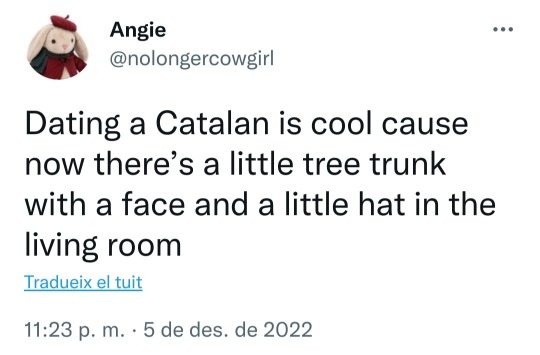
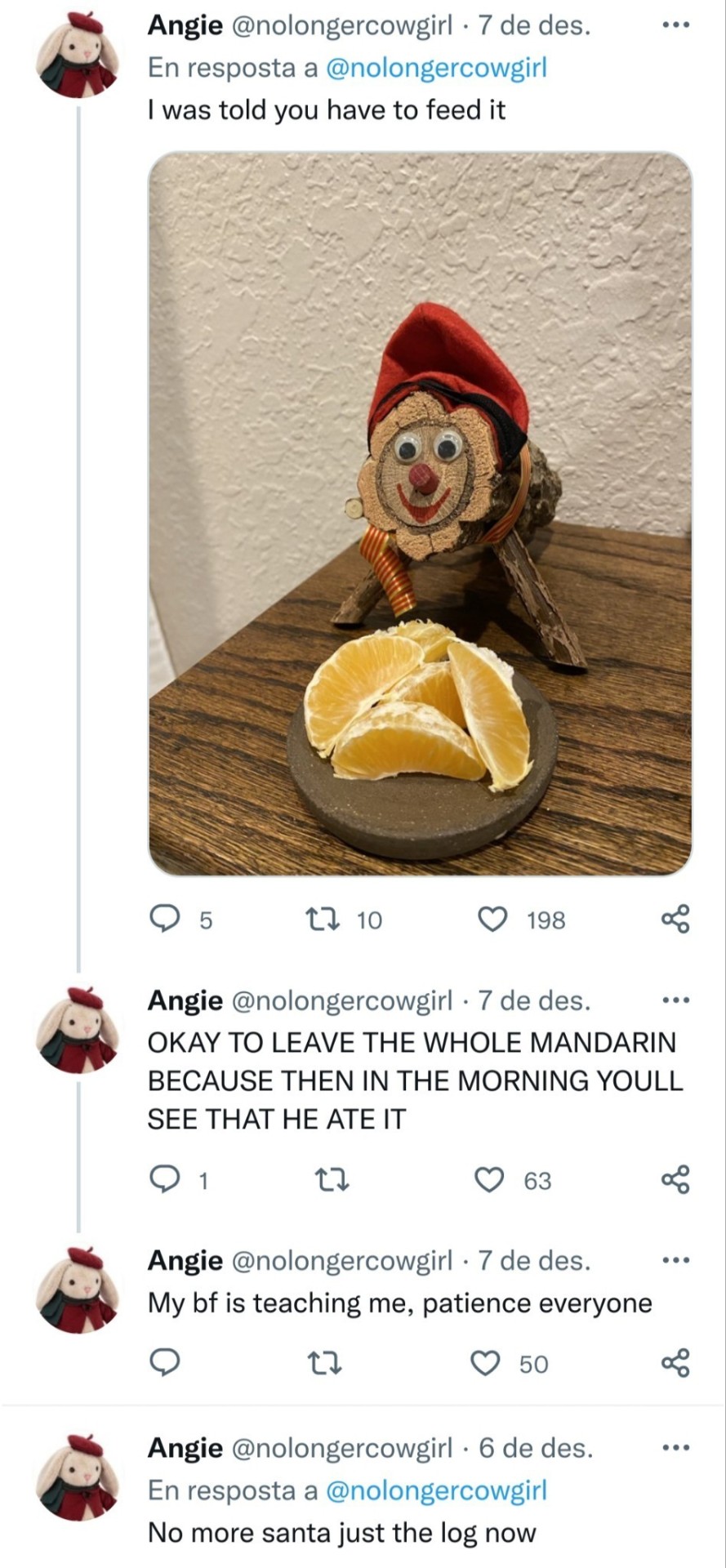
#tió de nadal#tradicions#nadal#christmas#christmas traditions#catalunya#catalonia#culture#cultures#cultural exchange#coses de la terra
2K notes
·
View notes
Text
What is Festa Junina?
You may have heard the brazilian cc's talking about throwing a festa junina in the server, but what is it exactly?
Festa Junina translates to June's Party, and its origins go back to pagan midsummer and harvest celebrations. Time went on and it mixed with catholic beliefs, especially those centered around Saint Anthony, Saint Peter, and Saint John the Baptist (which is why it is also known as São João).
The tradition was brought to Brazil with colonization. It's no longer a summer fest since it's winter, but you can still see the influence (maybe the bonfires are part of it).
Nowadays, Festa Junina is known for the traditional square dancing and the food — seriously, the food is amazing (look up pamonha, cural, canjica, pé-de-moleque, bolo de fubá, cuzcuz nordestino... damn I'm hungry)! Most of it is made with corn or peanuts. Mulled wine is also a must! People dress in a "country" fashion, with straw hats, puffy dresses, and drawn freckles and mustaches. Everything is VERY colorful.
School kids will put on shows (known as quadrilhas), which usually include a "wedding" comedy sketch. In my high school, the twist was that the best man was in love with the groom. It was very dramatic. I loved it.
Here are some pictures and traditional songs! I wish we could get a mod with the foods to the server or something, but just the skins and decorations will already be so much fun!
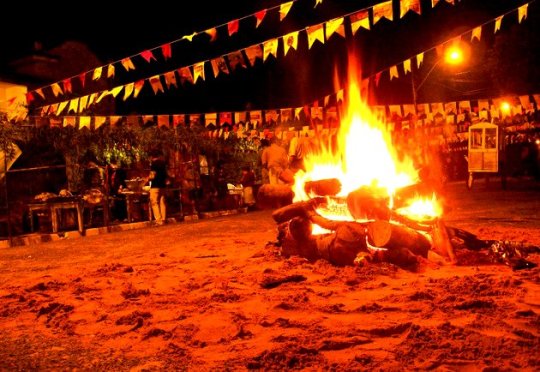



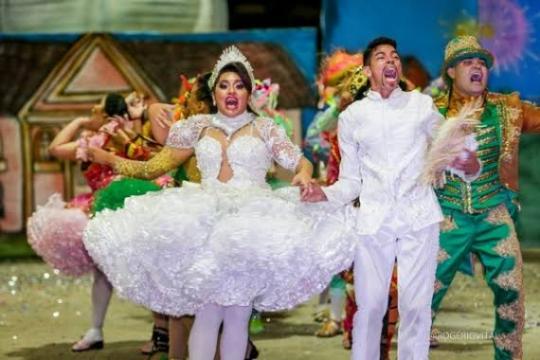
youtube
#the idea of sharing traditions like this in the server is SO MUCH FUN#and not just because festa junina is my favorite#qsmp#qsmp brasil#brasil#brazil#brazilian#culture#cultural appreciation#cultural exchange#festa junina#são joão#midsummer festival#Youtube
509 notes
·
View notes
Text
Mmm-hay, returning to this very crucial "Samurai Bravo" issue:
Jack is a little unnerved by sushi restaurants in Johnny's neck of the woods, especially when he finds out that they all serve raw salmon. He is both a little flattered and a little horrified by the whole experience of Johnny taking him to one, and the adventure ends with Jack insisting that Johnny come over so he can make him some real food.
Johnny proves to be incredibly adept with chopsticks. And he's really enthusiastic about how much he enjoys everything. And Jack feels...something? He smiles a lot.
Johnny really butchers his first, "Domo air-a-gatto," but he's sincere. And that first, crisp, "Hey. Kanpai, good buddy," makes Jack swoon a little, for reasons he does not fully understand yet.
Johnny helps with the dishes. He does a lot of dancing during the process. Mostly with his butt, but also his shoulders. Everything comes out sparkling.
At the end of the night, when they part ways, Johnny's like, "Okay, how do you feel about corndogs? 'Cause there's this place down at the beach that's got great curly fries, too..." And Jack's like, "Uh...you...want to keep doing...this?" And Johnny's like, "...Well, yeah. You just made me a crazy awesome dinner, and our first...uhhh...was a bust." [POSE] "This town's got a lot to prove," [POSE], "and I'm gonna show you a good time."
Jack has an absolute attack of the vapors, but maintains his composure. They agree to go to the beach together in the near future.
#headcanon#samurai bravo#samurai jack#johnny bravo#i ship it#i ship it hard#fanfic idea#salmon sushi is a recent invention from outside of japan#fascinating story#let me make you some real food#cultural exchange#butchering the pronunciation#he got the spirit tho#kanpai good buddy#swoon#johnny is a compulsive dancer#his hips don't lie#admit it#y'all are dating#attack of the vapors#cute#fluffy#romantic#sweet#lol#i love them
194 notes
·
View notes
Text
One of the countless parts of cultural exchange between Coalition species is the introduction of various forms of entertainment. Digital or "Video" games included.
From what we had already seen in their other forms of media and actual history in general, we expected there to be a great variety, including of the violent kind. Still, it was quite shocking to see how many of their games, particularly the "First Person Shooters" had "enemies" that eerily resembled many different species among the stars before they had ever made first contact with us. Though most of their visuals were more vicious and brutal than the actual counterparts, the similarities were still off-putting. The "kill moves" in many of these games were too disturbing though. Their imagination is... vivid.
As we examined and played more of these games, we noticed many of the "mechanics" were very illustrative of Human nature at large.
Tactical games with highly specialized individuals working together in small group to accomplish otherwise impossible goals.
Role-playing games where an individual or a very small team, using countless tools, tricks, and sometimes pure grit, overcome the odds and emerge victorious.
Strategy games where you construct an elaborate and efficient system of production and distribution, manage large forces, and exploit every resource to maximize your advantage before overwhelming the opponent with insurmountable force.
We also tried their Virtual Reality games, but the visual stimulus was simply too much for many of us, and some were simply incapable of playing them due to the forward-facing constricted view Humans have. It felt so claustrophobic, yet Humans sometimes seem to have a greater degree of perception than those of us with literal eyes on the backs of our heads.
One other common theme we noticed, particularly in "adventure" games, was the incentive to be a kleptomaniac.
"You never know when you might need it!"
Was the typical response.
Given their behavior in regards to planetary moons that they've displayed in recent times, that checks out too.
Bloody magpies.
#humans are space orcs#humans are space oddities#humans are space australians#humans are deathworlders#humanity fuck yeah#carionto#aliens and video games#cultural exchange
123 notes
·
View notes
Text
Solarpunk and colonial thinking

Keeping my Solarpunk rambles up... And today a more serious topic, but I kinda want to talk about it.
Solarpunk has a weird, weird relation with decolonialism, colonialism and indigenous rights and indigenous knowledge. On one hand, Solarpunk loves to reference some indigenous knowledge, if it is handy. One example that comes to mind is different indigenous American forms of agriculture, like the three sisters. On the other hand, though...
I see a lot of white Solarpunks also kinda converting to the entire idea of "the noble savage". Like "OMG, the indigenous people were so in synch with nature" and stuff like that. Things that are super harmful as a main narrative. And also... as soon as indigenous people do something, that white folks do not like, a lot of white solarpunks will instantly go into full colonizer mode. A good example of that is indigenous hunting practices or practices of animal sacrifice.
And, of course, when it comes to land management, white folks - and that includes a lot of solarpunks - will also very quickly think they know better or know what is better. In Finnland there was a wind farm build recently on sacred Sami land. And, like... That's just not okay.
I mean, I am mostly white. (Like, my great grandmother was Chinese, but I have been raised white and do not look Chinese. So... eh.) But I honestly do think, that we can learn quite a few things from different indigenous cultures (and with that I do not only mean the indigenous tribes of north america). But if we learn from them, we cannot just take knowledge that we like and run with it. Cultural exchange should be that. Exchange. Respectful. Not just appropriation of the three things we like.
Also: Watch Andrewism on YouTube. He talks about that a lot.
#solarpunk#indigenous rights#indigenous peoples#indigenous#cultural exchange#land back#indigenous sovereignty#indigenous knowledge
201 notes
·
View notes
Text

#lebanese immigrants#tacos al pastor#mexican cuisine#culinary fusion#cultural exchange#shawarma#open flame cooking#pineapple#cilantro#mexican street food
35 notes
·
View notes
Note
The word "tulpa" is used first by Alexandra-David Néel (Belgian-French buddhist anarchist) and phoneticized from "sprul-pa" (also rendered as "trulpa"). You can also trace the term back to sanskrit as "Nirmita".
The concept of an apparition is Buddhism can be attributed to aṣṭamāyopamā (sanskrit) or the 8 similes of illusion, which are basically metaphors for explaining how something can be perceived without it actually existing in the physical world. Apparitions (Nirmita) is the 8th simile.
She visited Lhasa in Tibet, a place which was inaccessible to foreigners at the time, and wrote the books "My Journey to Lhasa" and "Magic and Mystery in Tibet", where she explains what she learned in het journey. She then coined the term "tulpa", which spread to westerners of New Age practices as a type of thought-form.
Thought-forms in mysticism are attested by the book "Thought-Forms: A Record of Clairvoyant Investigation", which explains how many theosophists believe that thoughts are not simply a subjective thing that is confined in the human mind, but that they are "things" which have intrinsic properties. These thought-forms have principles (colour, form and clearness are determined by the type of thought) and classes (thought-forms can have certain forms which express the thought's inherent properties).
Tulpamancy today is not related to thought-forms.
Tulpamancy as it is today started, funnily enough, on 4chan - specifically in the paranormal board /x/ and subsequently the My Little Pony board /mlp/. Before that, the process of creating a tulpa was not known to people, and it generally involved ritualistic or metaphysical practices.
In /x/, some people began (in my opinion kind of haphazardly) making tulpas, and they reported their success. They then began writing guides which were freely shared in the community.
The real "explosion" in popularity started in the /mlp/ board, where topics of tulpamancy started popping up, which interested a lot of users. This snowballed into the creation of a forum ane a subreddit for the community (which were founded only after a Tulpamancy IRC was created, mostly made up of /x/ board users).
The approach to tulpamancy at this time was mostly psychological, instead of the previously metaphysical view of the practice.
The practice of tulpamancy and the practice of creating emanations are very different from each other, with the only similarity being the name (with "tulpa" only being a phoneticization of the tibetan term).
With the argument of cultural appropriation in the tulpamancy community, we need to first define what cultural appropriation is in the context of word usage.
Cultural appropriation in the context of word usage refers to the adoption or use of words from another culture without understanding or respecting their cultural significance, often resulting in the trivialization, misrepresentation, or exploitation of the originating culture.
Is the usage of the word "tulpa" mocking the original practice? Not really I don't think. The word "tulpa", while it was coined by a buddhist is generally not used when referring to emanations. (What I am about to say is personal experience, keep that in mind) Most buddhists I have spoken to at most will have a fear of non-buddhist practices and ideas being wrongfully thought of as being buddhist, which may have been a problem in the past when tulpamancy was indeed though of as a buddhist practice, but now the community fully separates itself from any religion or spiritual practice.
Here's a link to a post on /r/Tulpas on reddit from a Tibetan Buddhist with an emanation:
https://www.reddit.com/r/Tulpas/comments/unt6h7/i_am_a_tibetan_buddhist_with_an_emanation_tulpa/
---
What do you think about this, Sophie? I found it as a kind of copypasta to explain how tulpamancy is not cultural appropriation.
It's a pretty good overview! 😁
Appropriation topics are always tricky, but to me this conversation comes down to two question. The first is if the original tulpa from Alexandra David-Neel was appropriative. In my opinion, while it may have veered away from the Tibetan sprul-pa in some ways, it was created by a Buddhist convert with the aid of Tibetan translators like Lama Kazi Dawa Samdup. For this reason, the original ADN tulpa is generally considered more a result of cultural exchange.
I do think treating the ADN tulpa as an authentic Buddhist practice might be harmful, but it would be unfair to say it was made without regard to the original culture. (I would also say that it's hard to judge how much of this was indeed an authentic Tibetan Buddhist practice or not. Most people who have said it isn't are looking at current Buddhist practices 100 years later after an invasion by China destroyed many religious texts and records and heavily suppressed the religion.)
The second question is if modern versions of the tulpa are appropriative. And I don't consider this to be the case. Modern tulpamancy, while born from ADN tulpa, mostly just uses the words and general concept. As you say, the big problem within Buddhist circles is certain practices being falsely presented as Buddhist, muddying the waters. Over the last decade, the tulpamancy community has made a strong effort in distancing themselves from Tibetan Buddhism and tulpa's etymology.
...
Here's the direct link to the Reddit post from the Tibetan Buddhist with the emanation:
#tulpa#tulpamancy#buddhism#tibetan buddhism#syscourse#pro endogenic#pro endo#multiplicity#plurality#pro tulpa#endogenic#religion#cultural exchange#plural#systems#system#plural system#tulpagenic#actually plural#actually a system
26 notes
·
View notes
Text
Uncharted Waters: To the Victor

Aside from the market place, which stretched along two miles of smooth road, there was plenty to see of Gaoling within walking distance. Katara was determined to see as much as she was able, and so took the lead to every park, garden and historical site she heard of.
“I didn’t grow up around a lot of monuments,” she told Zuko. “Until I left home, the oldest building I’d ever seen was only about 40 years old, and it wasn’t much to look at.”
“What about parks?” Zuko asked. “Or hiking trails?”
“Hiking trails?” Katara scrunched up her nose at that. Zuko told her about the hiking trails that went through the woods and mountains of the Fire Nation where people would take recreational trips.
“People would do that for fun?” Katara asked dubiously. “Just walk up mountains and through woods for fun?”
“Some of the trails could be really difficult,” Zuko explained. “But a lot of them weren’t much harder than walking up a hill. And there were beautiful views. Depending on where you were, you could see over the ocean, or fields of flowers, or cliffs. I’m not doing it justice, but if you saw one of those trails, you’d get it.” Katara shot him a look which suggested that she very much doubted she would get it. Zuko seemed very enthusiastic about hiking, though.
“I guess if my only experience doing it wasn’t for survival, I’d enjoy walking through the mountains, too,” Katara conceded at last. “There are beautiful places to see back home, too, but the views were more a bonus than the point. There are some places, like the glacier fields where you might not return from if you go in. The ice can shift without warning. There are forests further inland, too. With hot springs where we go to celebrate…well, a lot of different things.”
“There are forests?” Now it was Zuko’s turn to be incredulous. “I thought the Southern Tribe was all ice.”
“Nope,” Katara shook her head. “We have forests inland. That’s where we get wood for building our bigger boats. A lot of our rivers flow from there, too.”
“Why don’t you guys live there?” Zuko asked. “Wouldn’t it be easier?”
“Not really,” Katara pursed her lips thoughtfully. “The ocean is our connection to everything. All the animals we hunt have either live around the ocean or have to go there sometime. It’s also our connection to the rest of the world. And I guess calling what we have forests is kind of misleading. It’s not like….like the Foggy Swamp, or the island. There are trees, but not a lot of them. We have to be very careful not to overharvest them. We didn’t even really start using them for our boats until after the war. We don’t even use them for firewood unless we really have to.
“What do you use for fire then?”
“Driftwood, mostly. Dry grasses in the summer.”
“That sounds like such a difficult life.” Zuko frowned as he thought about what that life must have been like. No wonder Katara was so adept at living on the island.
“It was all I knew for most of my life,” Katara shrugged. “It works for us. And maybe we don’t hike for fun, but there’s still plenty to keep us entertained. We have penguin sledding, ice skating, and kayaking. There’s the story circle, and rock hopping-‘
“Rock hopping?” Zuko repeated. Katara’s face split into a wide grin as she described a dangerous sounding sport that had to do with leaping over crevasses and water onto whatever stone surface was close enough to reach. The further the stones a player could reach, the better they did.
“The best players tend to be our best hunters,” Katara told him. “It teaches you to be agile and light on your feet. I think you’d be pretty good at it, actually.”
“Well,” Zuko said shyly, “maybe someday I can visit and you can show me how to play.”
“It’s a deal!” Katara agreed.
Read the rest of the chapter here
44 notes
·
View notes
Text
So kinda funny life thing lately
Recently my writing partner is going through essentially Jewish bootcamp (his wife is going through Orthodox conversion so that if they were to have kids theyd be considered Jewish; ironically though due to customs that means he has to do a SHIT ton of studying and scholar shit since they basically formally teach the culture and customs and rules and history and beliefs and so forth and due to his family situation, he was never cultured in it)
And Ive just been doing a lot of my casual active studying of Buddhism and reading into some of the history of it and all cause like
I honestly identify more as Buddhist than Chinese at this point and have largely kinda let go of the "I was never cultured in it due to my family" of my ethnic culture and accepted rather that while I may have missed out on that a lot of my childhood and life sitaution actually always had me set up for Buddhism + its honestly something I culturally identify with and understand and vibe with better
And so I like to learn about the history and different perspectives so Ive been doing light reading
And its really funny cause randomly we will be like "Heres the cool things about it and things I like and the neat shit" but also theres some of the more mythos / lore and all that we both respectively side eye a bit
And so every so often we just chat about things were finding and perspectives and largely have open space to tell the other about topics and discussions from the perspectives of Buddhism and Judaism
And its really interesting seeing some similarities, differences, and - honestly my favorite discourse to read people on forums talking about - is if Abraham and Brahmins are related or if its coincidence
But its a really neat experience cause both of us grew up feeling estranged from our cultures as our abusive households never really raised us let alone in any cultural manner, and so its a really nice healing thing for the both of us to have our cultural niches that we are either fitting more naturally into (my case) or being properly immersed into
And its really nice being able to celebrate that by exchanging it respectfully with one another.
You know, for once, actual cultural exchange
8 notes
·
View notes
Text
Down Under & Up Yonder 😁
Folks, I got the sweetest surprise package from @m0ose-idiot 'down under':

Me receiving the package: 😳 Australia?!? I know who this is! 🤣
Now, will you please take a moment to share my love for this adorable candy corn rat amigurumi?

Is it not the cutest ever?? And such pristine crochet stitches (I mean, I'm not surprised given the BBC ghost magic crocheted by this talented maker) ... siiigh 🥰🧶 I do love beholding precious friendship stitches. ❤
This amazing cultural exchange including the koala Cadburys (omg! 🤤) and Australian stickers 🐨 🦘 follows my rather feeble attempt to share some good old candy corn from 'up yonder'.
What a delight this has been. Thank you @m0ose-idiot for gracing my tumblr feed with talent and humor and with all that you do making this world a nicer place to be. ❤🌏
And no, Spencer, you most certainly cannot have my candy corn rat. Mine, Dude. I'll make you a chipmunk.

#cultural exchange#@m0ose-idiot#tumblr mutuals#crochet kudos#candy corn rat#and omg what was I thinking with opossum???#😭#crochet#crochet pattern#amigurumi#crochet inspiration#crochet love#THANK YOU!!!#🥰❤️
15 notes
·
View notes
Note
What struck you as culturally and stylistically alien in Magnificent Century (not as in the historical setting, not as in “slavery is bad”, but as in this being a Turkish show)?
This is a complex question that we should start a longer discussion over, and that I can probably only realize after watching more than one dizi (I REALLY wanna watch Yakamoz S-245).
Off the bat I might say probably the pacing is the most interesting thing, I remember reading an article where a writer (not from MC) said "dizi are not afraid of slow" and BOY IS THAT TRUE.
Other than that, lots of what is weird and funny about MC so far doesn't seem that alien given what the show is (aka a cheesy period drama with very inconsistent production quality but also genuinely gripping themes and heart, that is just set from an original perspective for western Europe).
The one thing that I noticed and that might fit under this is how whenever people PRAY using established formulas (and as such they're speaking Arabic) there are no subtitles.
I wondered if that's because they're assuming a majority Muslim/Muslim-raised audience?
#magnificent century#muhteşem yüzyıl#magnificent tumblring#cultural exchange#what would YOU say are big differences between Turkish and western shows at large?#have you ever watched an italian show or movie?
23 notes
·
View notes
Text
Two Stories: European Translating a Fictional Japanese Novel
yoakesan asked:
Hi!
The protagonist of my novel is Sicilian university student who's working on a translation of an imaginary Japanese novel, which I would like to present as a sub-plot (the main plot features the Sicilian guy attending a local festival near his hometown).
The Japanese novel is about a young woman who has strong feelings of nostalgia towards summer, partly because of a short-lived love story she had with another girl. She spends so much time longing for summer that she can't be happy in the present.
Now, in order to underline this concept, I was thinking that the Japanese novel could end with the protagonist dying before the arrival of summer, but I'm afraid that, since the main plot features a happy ending for the Sicilian protagonist, that might be unnecessarily tragic.
Also, do you have any tips on certain aspects of Japanese culture that I should avoid underlining? The Sicilian guy loves Japanese literature, both classic and contemporary, and likes listening to contemporary Japanese electronic music. I was thinking of mentioning some similarities between the two cultures (islands - sea - volcanoes - cherry blossoms/a typical festival that is celebrated in the protagonist's hometown in the occasion of the blossoming of another tree), but the point of the novel is not to draw a consistent parallel.
Finally, said festival features people from many different countries dancing and playing instruments in traditional clothes. How can I be careful about exoticization when describing that part of the story?
More info needed
I like this concept and have read Japanese novels utilizing similar plot devices. An outsider’s perspective would be interesting. This idea also reminds me a little of The Hours (1998) by Michael Cunningham which won the Pulitzer in 1999. However, I wish you had said something more about this festival in this town so we might look into similar parallels in a Japanese context. Similarly crucial would be information about your own familiarity with Japanese literature and which authors/ novels you intended to draw on for your own inspiration for this unnamed novel. After all, the unnamed novel being translated is key. Its themes, time period, place in the Japanese literary canon etc. would all influence your protagonist and his state of mind, wouldn't it? Having done my share of translation, I have more than once grappled with the struggle of not knowing which word to pick because I don't even know what meaning the original author is trying to convey.
I think this is an interesting question, and I like the concept of cultures shaped by similar forces and motifs being exchanged through the act of translating a novel. Speaking as a person who lives in another part of the world with unpredictable weather, earthquakes, the sea, etc., I like rediscovering aspects of my current home that also evoke Japan and vice-versa. so I invite you to re-submit with greater detail via DM so that we may provide you with a more definitive answer.
The other question you sent on whether domestic tourism for hanami in Japan is common and which sites are favored is easy to answer through research using most search engines, so we will not be answering it.
- Marika.
#japanese#japanese culture#japanese literature#European protagonist#Sicilian#Sicilian protagonist#literary#literary devices#literary motifs#cultural exchange#asks
171 notes
·
View notes
Text
"Gigante didn't know it then, but the inscriptions of this astrolabe would allow her to chart its journey across two continents during medieval times. And they would reveal an era when Muslims, Jews and Christians built upon one another's intellectual achievements. "
9 notes
·
View notes
Text
The people who work in the USA consulate in Barcelona have made this video explaining some things about Catalan Christmas to their families.
I, uh- I also can't answer why this holiday has so much to do with poop. It just does. 💩
To be fair though, the idea of an overweight immortal elderly man dressed in weird clothes who breaks into your house through the chimney -even if you don't have a chimney- to leave you presents and leave without being seen is also quite strange 🎅. It's not much more easy to understand than a tree log that you feed and then hit and it poops out presents.
Either way, happy holidays to you, your chimney elderly man, the magic of nature, and everyone else! 💫
#nadal#tió de nadal#caganer#christmas#christmas traditions#cultures#catalunya#catalonia#barcelona#cultural exchange
142 notes
·
View notes
Text
Solarpunk and Cultural Diversity
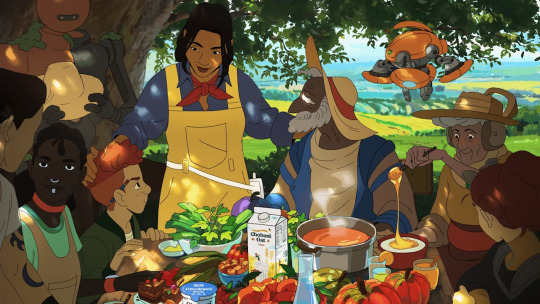
Continuing with the entire "Diversity in Solarpunk" topic, we get to the one, that Solarpunk as a community struggles a lot more with than the inclusion of queer voices. And that is ethnic diversity.
I kinda talked about it in the Solarpunk and colonial thinking post, but it is something that I generally notice.
Maybe I should not call it "ethnic diversity", but rather "cultural diversity" really. Because that is the thing everyone seems to be struggling with.
While the Solarpunk movement did originate in Latin America and is kinda intrinsically linked to Amazofuturism, at least in the Anglosphere it is primarily a white movement. And it is noticable in so many regards.
A big part of this is that white people have the tendency to assume that their experiences are universal. Which also makes them think that whatever worked best for them will work best for everyone culturally (and in any other area). There is a whole conversation to be had in the regard of this and religion. But it shows in many other areas, especially when it comes to Solarpunk or more broadly optimistic SciFi.
See, optimistic SciFi in general tends to feature a human culture based primarily in our western culture and western ideals. Even in stuff like Star Trek, that tried to question this, we see it still with the entire star fleet. Western culture + some spice seems to be the ingredients, there. When white folks imagine the future, they will always imagine a future based around white ideals, without even realizing it.
As such it obviously happens in Solarpunk. A really good example of this is science. See, western culture has this very specific idea how science is supposed to look like. We obviously could have a whole conversation about how much the islamic world has influenced the scientific methods... No, the point is, that other cultures did have science as well and their own scientific methods. And something that should happen is for western people to learn about this and understand it.
Instead of going ahead like "white science is best science" first try to see what you can learn.
And also (sorry, this is rambly)... when you imagine a Solarpunk world, allow for cultural diversity. People will still speak different languages and that is good. People will celebrate different holidays. And that is good. People might have their own rituals depending on culture around big family events. And that is good.
People should not be forced to adapt their lives to your culture. Even if they are living where you are living. It is okay for people to have different cultures. And to approach certain questions in a different way.
Instead of trying to imagine a homogenous world, imagine a world of differences. Because differences are good.

#solarpunk#diversity#cultural exchange#cultural diversity#ethnic groups#coexist#utopia#solarpunk fiction
30 notes
·
View notes